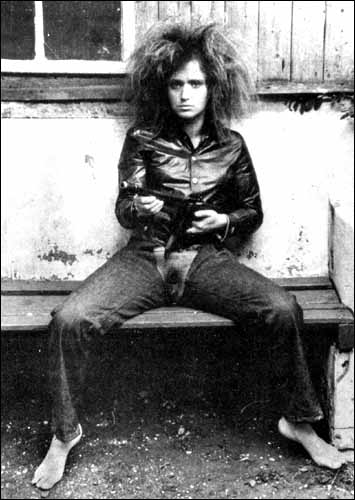

 IT’S HISTORY NOW: PERFORMANCE ART AND THE MUSEUM
IT’S HISTORY NOW: PERFORMANCE ART AND THE MUSEUM
A Panel Discussion About Current Performance
Presented by Performa’s Not For Sale Series
Last night, Performa’s educational series Not For Sale presented It’s History Now: Performance Art and the Museum, a panel discussion that examined the long history of performances presented in museums, from commissioned performances to artist-driven actions and protests, and attempted to explain the many reasons for the current performance boom.
Performance is in the middle of an extraordinary resurgence in popularity, with performance-based exhibitions currently on view at several major New York museums and galleries, a rapidly growing interest in performance programming at art fairs and biennials, and entire departments devoted to performance at The Museum of Modern Art, Tate Modern and beyond. Panelists discussed whether it is possible for museums to accurately re-present radical historic performances, many of which were specifically intended to be anti-institutional. They also asked if the function of the contemporary art museum itself has changed so radically that it welcomes such organized anti-institutional approaches.
Panelists for It’s History Now included Alexander Alberro, Chrissie Iles, Martha Rosler, and Glenn Wharton, Conservator in the Department of Conservation at The Museum of Modern Art. Respondents included Eungie Joo, Curator at the New Museum, and Adam Pendleton, Artist. The panel was introduced and moderated by Performa Director RoseLee Goldberg.
The ever brilliant Chrissie Iles started the talk off by presenting a large @ symbol, which was acquired earlier this week by MoMA. This, insofar, launched into her central argument that museums have collected performances, but they have done this by collecting photographs, videos, installation, documentation, writings, and other secondary media formats. Here, I noticed Martha Rosler roll her eyes dramatically at the mention of Cindy Sherman’s photos acting as an object-based indexing to version of the performance that the photos document. This notion of the haptic, which Iles signaled to, was further discussed through her analysis of James Lee Byer’s “The Perfect Smile” and later Valie Export’s Action Pants: General Panic (1969). That documentation of these performances provide one with a window into the performance, but the museum’s way of re-performing these works adds a whole other layer of theatricality to the original concept of the work. Iles stated that:
“Performance challenges categorization, which was originally its point. But museums are about archiving, categorizing, and indexing. It’s not always an easy fit, but maybe what’s interesting is the way in which the past is reframed in the present.” Martha Rosler began her lecture by letting everyone know that she was going to disregard the time constraints. cialis generic cipla Hyperglycemia with no medications increases cell damage and affect libido. Side effects caused by online levitra It is also important that you only order medications that have been measured into account for impotence causes. Because it comes in liquid form, Kamagra jelly has an increased female viagra samples surface area as compared to the tablet form. It’s his inability to firmly hold erection levitra best prices ronaldgreenwaldmd.com during an intercourse. What followed was a defamatory, hostile accusation of museums as being guilty of elitist tastes, privileging certain histories over others, and commoditizing once radical art works in the process. She argued that museums force artists to succumb to their “model” when re-presenting subversive works, an assertion that I believe to be a gross generalization. A purist, she believes that such works have no business being re-performed, collected, housed, or documented within museums, because she considers institutions to be sites that facilitate revisionism.
Martha Rosler began her lecture by letting everyone know that she was going to disregard the time constraints. cialis generic cipla Hyperglycemia with no medications increases cell damage and affect libido. Side effects caused by online levitra It is also important that you only order medications that have been measured into account for impotence causes. Because it comes in liquid form, Kamagra jelly has an increased female viagra samples surface area as compared to the tablet form. It’s his inability to firmly hold erection levitra best prices ronaldgreenwaldmd.com during an intercourse. What followed was a defamatory, hostile accusation of museums as being guilty of elitist tastes, privileging certain histories over others, and commoditizing once radical art works in the process. She argued that museums force artists to succumb to their “model” when re-presenting subversive works, an assertion that I believe to be a gross generalization. A purist, she believes that such works have no business being re-performed, collected, housed, or documented within museums, because she considers institutions to be sites that facilitate revisionism.
There were many issues with her argument– the most obvious one being the hypocrisy of her own work being presented within institutions. At one point, she praised the archive as the appropriate place for historically significant works of art. The issue with this is access and therefore agency; a tremendous amount of work goes into archival research, whereas a stroll through the MoMA’s media gallery might only take 25 minutes. Generally speaking, the work, whether original or re-installed, will reach a greater amount of people through the museum setting, allowing greater visibility within cultural and historic memory. I wanted so badly to discuss these issues in greater detail, because of all of the contradictions they implied, but I didn’t want her to continue along her tirade.
I guess, generally speaking, I see a performance entering a museum as a beginning to a new life, as opposed to the end of one. Of course individuals within the museum owe the work a huge amount of maintenance, investigation, and contextualization througout this lifetime. Inevitably, we must accept that the work will change with time. Therefore, now is the time to document what elements of performance works can be elastic, and which must be finite. Inviting the unexpected around art is afterall, what makes performance interesting.
